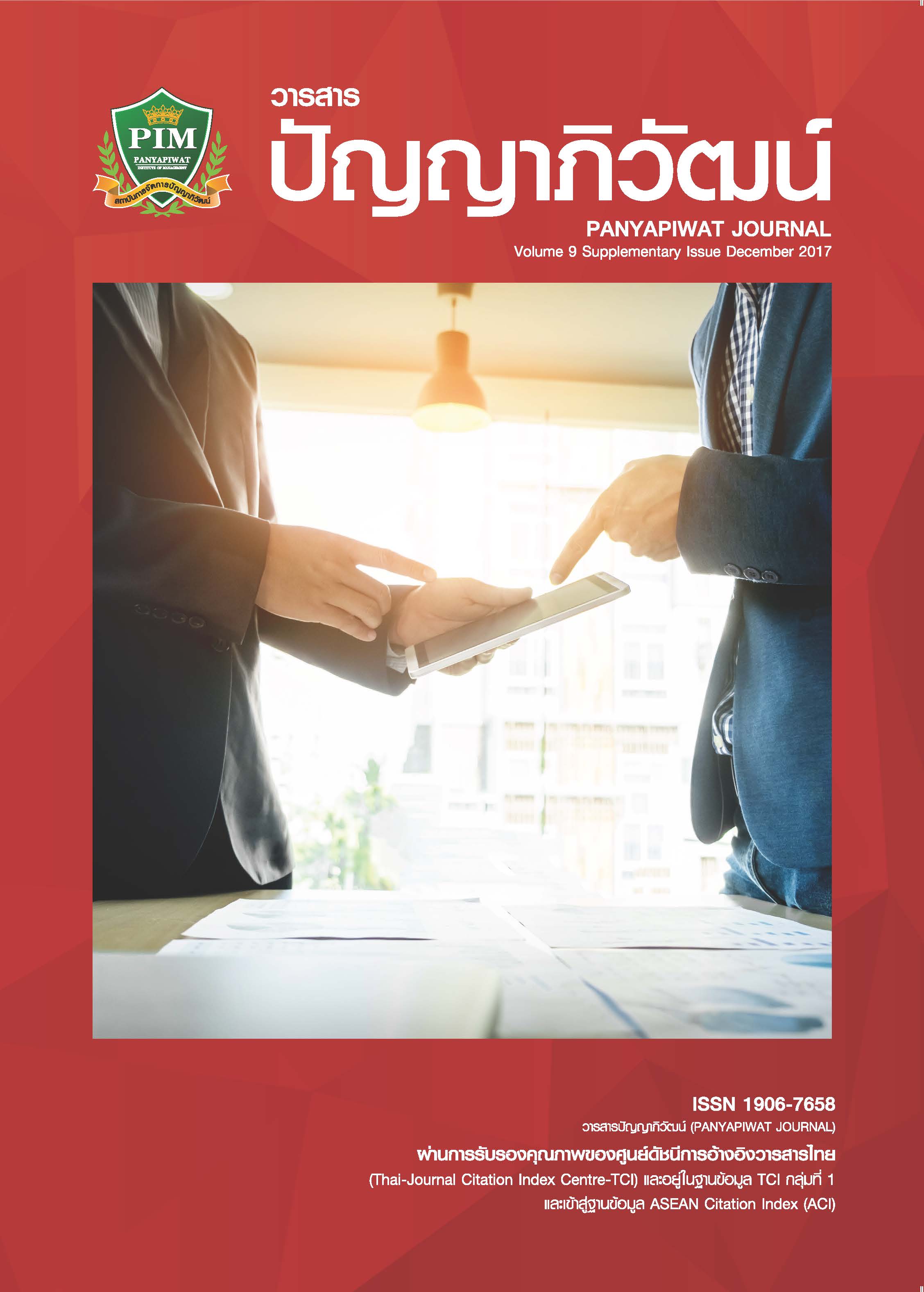RESEARCH ON PERSONAL CREDIT EVALUATION BASED ON CRIMINAL JUSTICE DATA
Main Article Content
บทคัดย่อ
Traditional regional economics and management science may justify the personal credit evaluation system in one way or another, but generally speaking, they are not specific enough. This article sets the personal credit evaluation based on criminal justice data as the focus and uses theories of management, regional economics, sociology, law and criminology to explore its source and inner mechanism of action.
Article Details
“ข้าพเจ้าและผู้เขียนร่วม (ถ้ามี) ขอรับรองว่า บทความที่เสนอมานี้ยังไม่เคยได้รับการตีพิมพ์และไม่ได้อยู่ระหว่างกระบวนการพิจารณาลงตีพิมพ์ในวารสารหรือแหล่งเผยแพร่อื่นใด ข้าพเจ้าและผู้เขียนร่วมยอมรับหลักเกณฑ์การพิจารณาต้นฉบับ ทั้งยินยอมให้กองบรรณาธิการมีสิทธิ์พิจารณาและตรวจแก้ต้นฉบับได้ตามที่เห็นสมควร พร้อมนี้ขอมอบลิขสิทธิ์บทความที่ได้รับการตีพิมพ์ให้แก่สถาบันการจัดการปัญญาภิวัฒน์หากมีการฟ้องร้องเรื่องการละเมิดลิขสิทธิ์เกี่ยวกับภาพ กราฟ ข้อความส่วนใดส่วนหนึ่งและ/หรือข้อคิดเห็นที่ปรากฏในบทความข้าพเจ้าและผู้เขียนร่วมยินยอมรับผิดชอบแต่เพียงฝ่ายเดียว”
เอกสารอ้างอิง
Becker, G. S. (1968). Crime and Punishment: An Economic Approach. Journal of Political Economy, 76(2), 169-217.
Brunnermeier, M. & Pederson, L. H. (2009). Market Liquidity and Funding Liquidity. Review of Financial Studies, 2201-2238.
Brunnermeier, M. (2009). Deciphering the Liquidity and Credit Crunch 2007-2008. Journal of Economic Literature, 23(1), 77-100.
Coase, R. H. (1937). The Nature of the Firm. Economica, 4(16), 386-405.
Coase, R. H. (1960). The Problem of Social Cost. Journal of Law and Economics, 3, 1-44.
Cohen, L. E. & Felson, M. (1979). American Sociological Review, 44(4), 588-608.
Dong, G., Lai, K. K. & Yen, J. (2010). Credit scorecard based on logistic regression with random coefficients. Procedia Computational Science, 1(1), 2463-2468.
Gaffney, M. (2009). Money, Credit, and Crisis. American Journal of Economics and Sociology, 68(4), 983-1038.
Gertler, M. & Kiyotaki, N. (2010) Financial Intermediation and Credit Policy in Business Cycle Analysis. Handbook of monetary economics, 3, 547-599.
Ghasemi, M. (2012). Visceral factors, criminal behavior and deterrence: empirical evidence and policy implications. European Journal of Law and Economics, 39(1), 145-166.
Kumar, K & Haynes, J. D. (2003). Forecasting credit ratings using an ANN and statistical techniques. International Journal of Business Studies, 11(1), 91-108.
Lando, D. (2009). Credit Risk Modeling: Theory and Applications. NJ: Princeton University Press.
Manova, K. (2013). Credit Constraints, Heterogeneous Firms, and International Trade. Review of Economic Studies, 80(2), 711-744.
Ruef, M. & Patterson, K. (2009). Credit and Classification: The Impact of Industry Boundaries in Nineteenth-century America. Administrative science quarterly, 54(3), 486-520.
Saunders, A. & Allen, L. (2010). Credit Risk Management In and Out of the Financial Crisis: New Approaches to Value at Risk and Other Paradigms. NJ: John Wiley & Sons.
Tibshirani, R. (1996). Regression shrinkage and Selection via the Lasso. Journal of the Royal Statistical Society, 58(1), 267-288.
Tittle, C. R., Botchkovar, E. & Antonaccio, O. (2011). Criminal Contemplation, National Context, and Deterrence. Journal of Quantitative Criminology, 27(2), 225-249.


